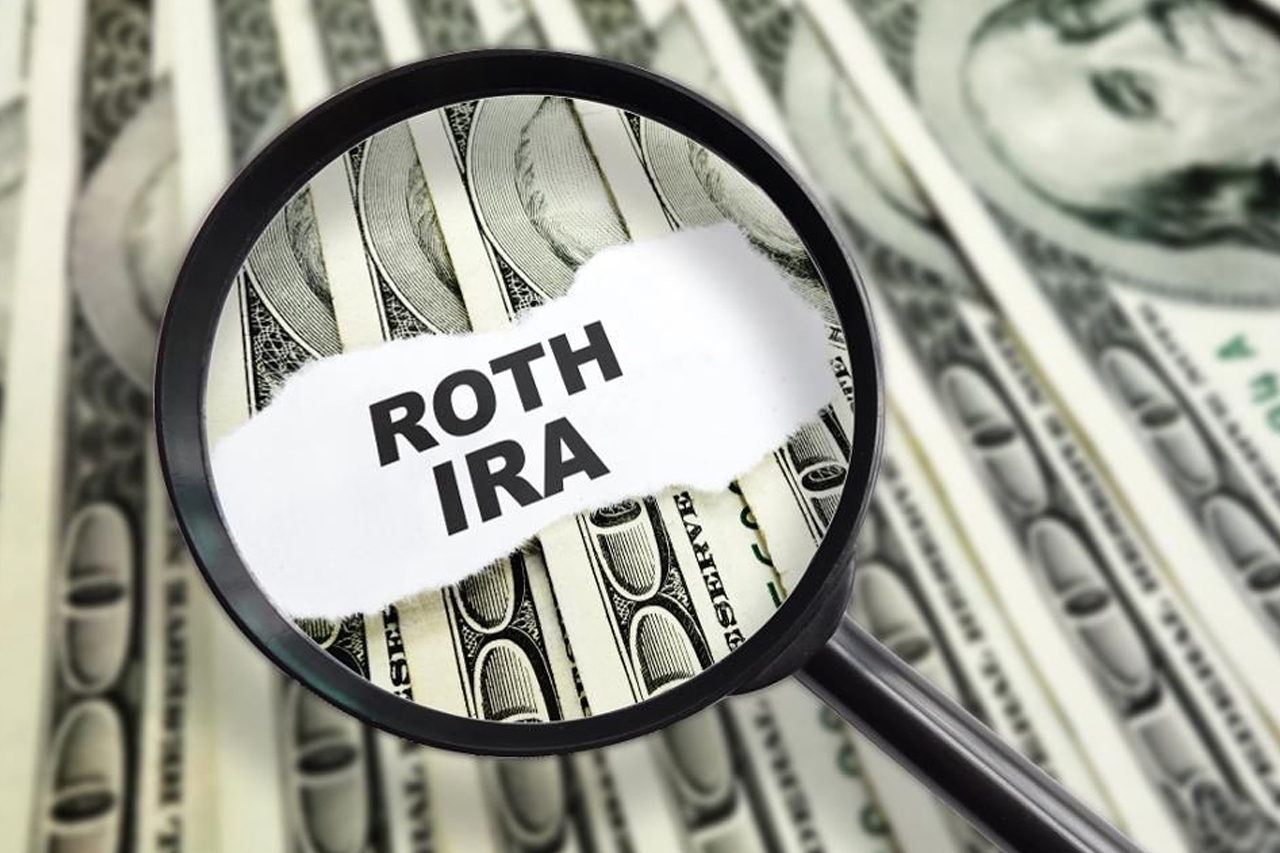One of the primary benefits of a Roth IRA is tax-free retirement withdrawals. However, not all withdrawals are tax-free, especially if they are made before the magic age of 59 ½.
Fortunately, there are lots of exceptions for qualified expenses like education or your first home purchase.
Understanding when you can make qualified withdrawals from a Roth IRA can help you avoid unwanted tax penalties that can eat away at your retirement savings. This guide will help you understand what is considered a qualified withdrawal and other instances in which you can withdraw from a Roth IRA tax-free.

What Are Qualified Withdrawals?
A qualified withdrawal, also known as a distribution, is when you remove funds from a tax-advantaged account, such as an IRA or 401(k), in alignment with specific IRS rules. By adhering to these rules, you can avoid paying unnecessary penalties or taxes. Conversely, withdrawals that don’t meet IRS rules are subject to penalties.
Though many tax-advantaged accounts share similar requirements for qualified withdrawals, such as the account holder’s age, some requirements depend on the type of account, such as a Traditional or Roth IRA.
Requirements for a Qualified Withdrawal
To make a qualified withdrawal from a Roth IRA, you must meet the following requirements:
The account must be open for at least five years, with the five-year period starting on January 1 of the tax year in which you made the first contribution.
For instance, if you opened a Roth IRA in April 2020, the account would meet the five-year requirements on January 1, 2025.
If the account is open for at least five years, you can withdraw contributions from the account without penalty at any time. However, withdrawals from earnings are penalized unless the withdrawal falls into one of the categories listed in the section below.
Types of Qualified Withdrawals
While contributions can be withdrawn from a Roth IRA without penalty, earnings are a different story. The IRS has created several exceptions that allow for tax-free, qualified withdrawals.
The following instances are generally considered qualified:
Retirement Withdrawals
If you’re 59 ½ or older and your account has been open for five years, you can make tax-free and penalty-free withdrawals. However, if your account has not been open for at least five years, the withdrawal may be subject to taxes and a 10% penalty.
First-Time Home Purchase Exception
Qualified account holders can make a one-time-only, penalty-free withdrawal of up to $10,000 to purchase their first home. If the account is five years old, the withdrawal is also tax-free. However, if the account is open for less than five years, income tax may be applied to the earnings portion of the withdrawal.
Disability Exception
If you’re diagnosed with a “total and permanent” disability, you can make tax and penalty-free withdrawals from your Roth IRA, regardless of how long it’s been open. Generally, your plan document will provide information about the terms and conditions of a disability exception, but typically, you must obtain a statement from a licensed physician certifying your disability.
Beneficiary Withdrawals
If you’ve inherited a Roth IRA and it’s been open for at least five years, you can typically take penalty-free and tax-free withdrawals from the account. Taxes are applied to withdrawals if the account is not five years old.
Additional exceptions
The circumstances above represent some of the most common qualified Roth IRA withdrawals, but numerous IRS-approved exemptions may qualify a withdrawal under certain circumstances. These include payment of unreimbursed medical expenses, the birth or adoption of a child, disaster recovery efforts, and military active duty.
See the IRS’s Exceptions to tax on early distributions table for a complete list of exceptions and conditions.
Tax Implications of Qualified vs. Non-Qualified Withdrawals
Generally, if you make a qualified withdrawal from a Roth IRA, there are no significant tax implications. Unlike Traditional IRA withdrawals, which are considered taxable income, withdrawals from a Roth IRA are not counted as taxable income.
However, it’s important to remember that withdrawals from accounts that don’t meet the five-year requirement may be subject to taxes and penalties based on the reason for the withdrawal.
Non-qualified withdrawals can have several tax implications, and it’s important to consider them before taking the distribution.
Namely, non-qualified withdrawals can be subject to a 10% early withdrawal penalty and income tax. How and when taxes and penalties are applied will depend on the circumstances leading to the withdrawal and the age of the account.
If you need to or are considering taking an unqualified distribution from your Roth IRA account, contact a financial advisor who can help you review your options and reduce the negative impacts when possible.
How to Make a Qualified Withdrawal
If you meet the requirements for a qualified withdrawal from your Roth IRA, you can follow these steps to make the withdrawal:
- Verify qualifications. If you’re 59 ½ or older and your account is five years or older, you’re likely set up for a qualified withdrawal. However, if you’re making a withdrawal based on an IRS exception, review the rules regarding that exception, including any caps on the amount of money you can withdraw without penalty.
- Initiate the withdrawal. You can initiate a withdrawal by contacting your IRA provider or logging into your online account portal or provider’s smartphone app. To initiate the withdrawal, you’ll need to choose a payment method. Standard options include electronic fund transfers (EFTs) or bank wires to the account of your choice and paper checks.
- Complete the required tax forms. At a minimum, you must complete IRS Form 1040 when you file your taxes for the year in which the distribution was received. However, if you take an early-qualified withdrawal, you may need to file additional documents, such as IRS Form 5329.
Qualified withdrawals are just one of the many benefits of owning a Roth IRA. However, following proper guidelines is critical to avoiding unnecessary penalties, so be sure to follow the information above to maintain compliance.
FAQs
What is considered a qualified withdrawal from a Roth IRA?
A qualified Roth IRA withdrawal is one that is free from tax or penalty based on the most current IRS requirements. Generally, a withdrawal is qualified if the account owner is 59 ½ or older and has a Roth IRA account open for at least five years.
However, there are other circumstances under which a withdrawal may be considered qualified, even if you don’t meet the standard requirements. This can include withdrawals to purchase your first home, completed after being certified as totally and permanently disabled, or made by an account beneficiary after the original owner’s death.
How does the five-year rule affect Roth IRA withdrawals?
The five-year rule stipulates that the Roth account must be at least five years old before the accountholder can make a qualified withdrawal, even after they reach age 59 ½. However, there are some circumstances, such as being eligible for a disability exemption, under which the 5-year penalty may not apply.
Always consult a tax or financial professional before withdrawing from a Roth IRA that is less than five years old.
Can I withdraw my Roth IRA contributions at any time?
If your account is open for five or more years, you can make a tax and penalty-free withdrawal from contributions anytime. However, penalties and taxes may apply if the account is less than five years old.
What happens if I withdraw from my Roth IRA before age 59½?
If you withdraw from your Roth IRA before age 59 ½, it may be subject to taxes and penalties, depending on the nature of the withdrawal.
For instance, if the account is at least five years old and you’re only withdrawing from contributions, you’re likely free from taxes and penalties. However, if you withdraw from earnings early, you may be subject to both a 10% penalty and income taxes.
In some cases, you can avoid taxes and penalties if you withdraw funds for a reason listed as an exception by the IRS. These include withdrawals for the first-time home purchase, to cover unreimbursed medical bills, the birth or adoption of a child, or the cost to make repairs after a federally declared natural disaster.
Greg Herlean
Greg has personally managed over $1.4 billion in financial transactions via real estate investing and fixed and flipped over 450 homes and 2000 apartment units.
His aptitude for business has helped him to provide management direction, capital restructuring, investment research analysis, business projection analysis, and capital acquisition services.
However, these days he is mainly focused on being a professional influencer and educating investors about the benefits of using self-directed IRAs for tax-free wealth management. He is also a devout family man who enjoys spending his free time with his wife and children.
Greg Herlean’s journey started at 19 years old when he made a 2-year journey to Guayaquil, Ecuador, and volunteered to help less fortunate families. As a result, he learned many foundational lessons about faith, community, and hard work, which have helped him in his business success. Using these lessons, he was able to slowly build his wealth through real estate investing and establish Horizon Trust in 2011.
Related Posts
July 15, 2025
Ultimate Cheat Sheet for Investing with a Roth IRA
A Roth IRA is a retirement savings account that offers tax-free investment…



